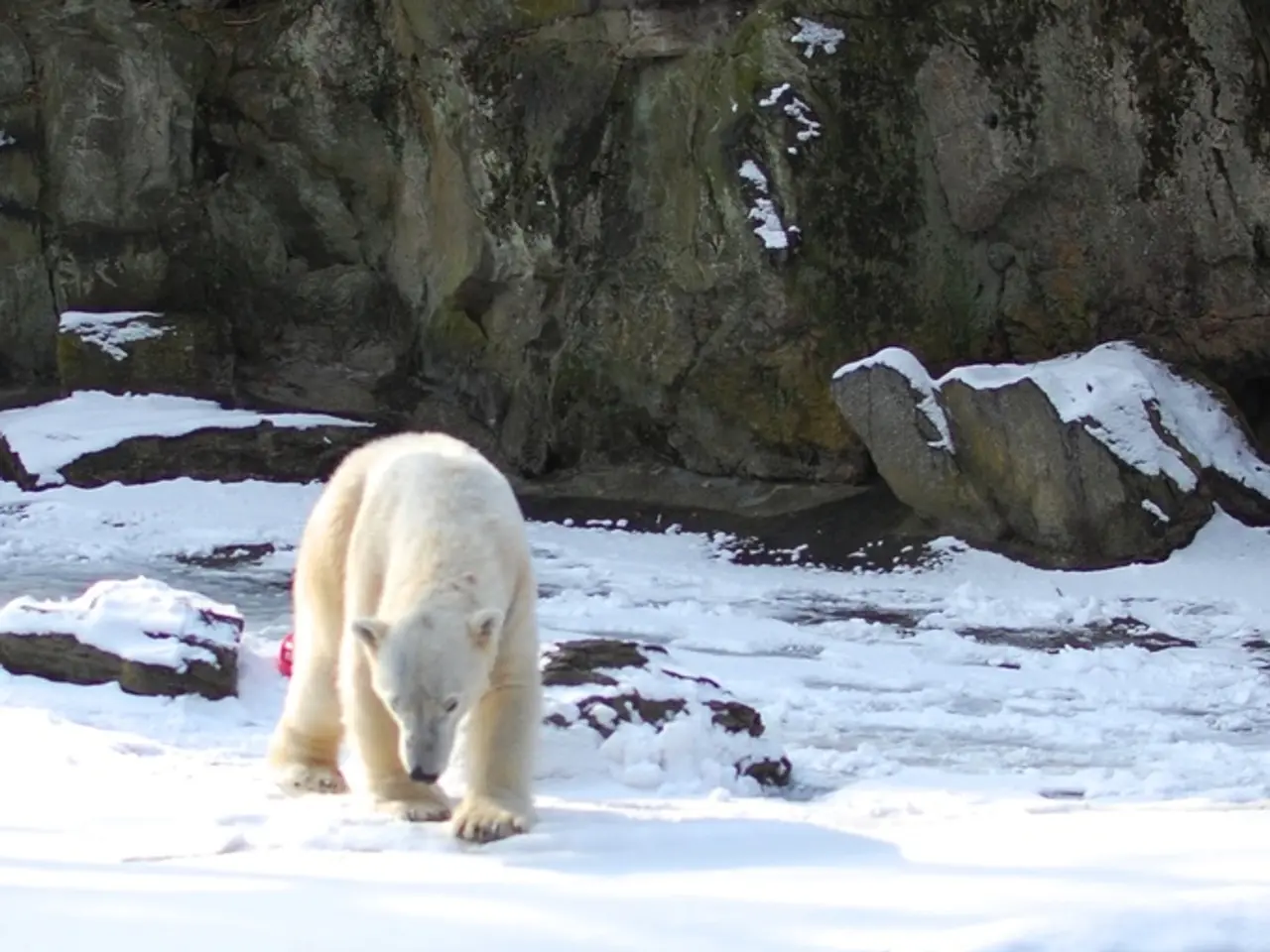Brown bear attack in Alaska leaves hiker miraculously alive
In a recent incident that took place about two miles up the Dome Trail in Anchorage, Alaska, a hiker was attacked by a brown bear. The attack occurred approximately at 3 p.m. on Tuesday, and thankfully, the hiker is now in stable condition.
The hiker, whose identity has not been disclosed, reported that she could not get out due to injuries sustained in the mauling. Firefighters, paramedics, and drones were swiftly deployed to locate the hiker, and she was eventually rescued with a helicopter and transported to a local hospital with non-life-threatening injuries.
According to the National Park Service, the majority of bear attacks occur when the animal feels threatened or is protecting its young. However, in this case, the brown bear that attacked the hiker ran off after the incident.
This harrowing event serves as a reminder of the importance of safety precautions when hiking in areas with brown bears, such as Anchorage, Alaska. Here are some key safety tips to keep in mind:
1. Make noise regularly: Talk, sing, or use a bear bell to avoid surprising bears, especially near thick brush or blind corners. 2. Stay on well-used trails: Avoid hiking through animal trails or dense vegetation where bears may be active. 3. Be alert for bear signs: Look out for scat, tracks, fresh overturned logs, or claw marks on trees, as these can indicate the presence of bears. 4. Carry and know how to use bear spray: Bear spray is one of the most effective tools for deterring aggressive bears. 5. Keep food secured and out of reach: Use bear-proof containers or hang food properly to avoid attracting bears. 6. Travel in groups if possible: Bears are less likely to approach groups than individuals. 7. If you encounter a bear, do not run: Instead, stay calm, speak softly, and slowly back away while facing the bear—running may trigger a chase response. 8. Follow local guidance and bear safety best practices from Alaska’s Department of Fish and Game.
In addition to these tips, it is recommended to leave a copy of the trip plans underneath a vehicle's windshield and to stop, group up, and talk to the bear if you encounter one to let it know you are human.
The Anchorage Parks and Recreation department also advises hikers to file trip plans with friends or family prior to trekking off into the great outdoors, as information regarding the planned route can be invaluable in case of an emergency.
Nevertheless, it is crucial to remember that bears are wild animals and should be treated with respect. Always be vigilant, and prepare for safe hiking in known brown bear habitats around Anchorage.
As the authorities continue their efforts to locate the brown bear involved in the attack, hikers are encouraged to remain in groups while recreating in any park or trail in the Anchorage area. Carrying bear spray is also recommended, and leashing all dogs is advised to avoid attracting bears.
Let us hope that this unfortunate event will serve as a reminder for all hikers to prioritise safety when venturing into the great outdoors, and that future encounters between humans and bears can be peaceful and respectful.
The hiker's unexpected medical-conditions, likely caused by the bear attack, hindered her from escaping the situation. Post-rescue, she was taken to a local hospital for health-and-wellness care, illustrating the importance of general-news updates and public safety.
Meanwhile, the Anchorage Parks and Recreation department stresses the significance of adhering to safety tips like fil statistics show that the majority of crime-and-justice incidents involving bears result from human negligence. Hence, hikers are encouraged to take precautions and prioritize safety to foster positive interactions with wildlife.
Furthermore, public awareness about the living conditions of these wild animals can contribute to a better understanding of their behavior, leading to improved strategies for co-existing in shared environments with sports like hiking.




